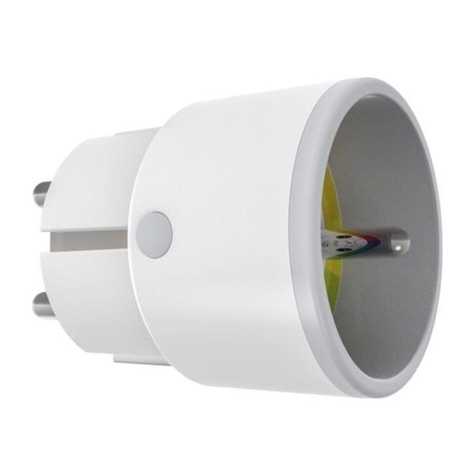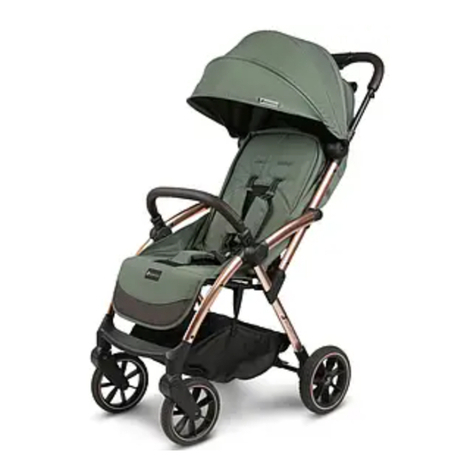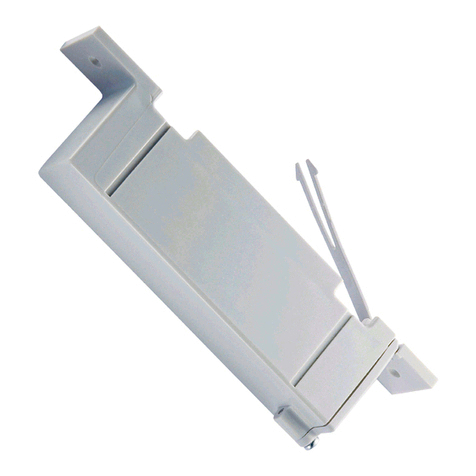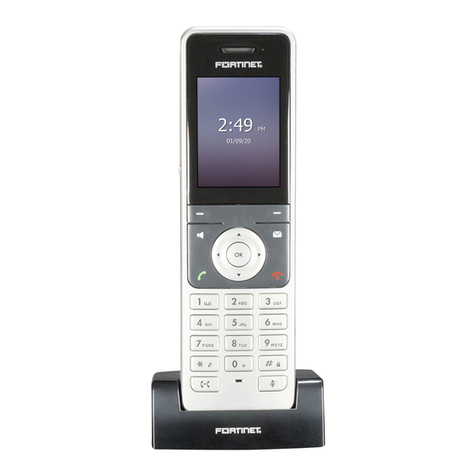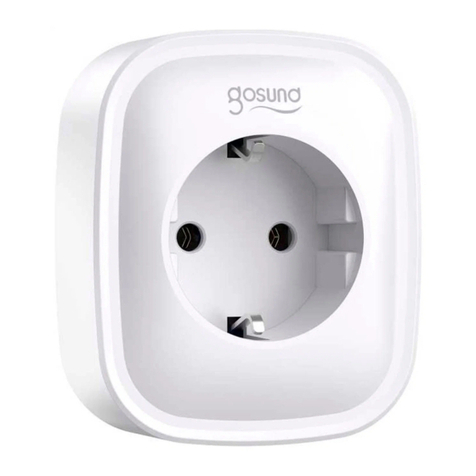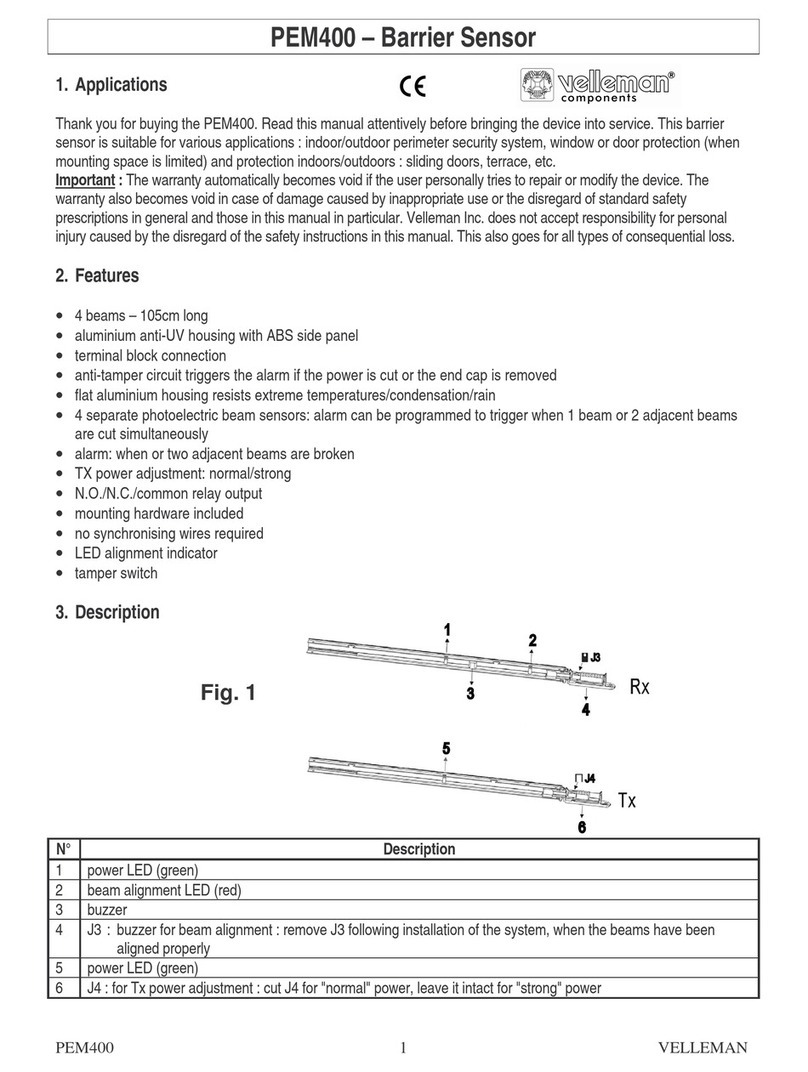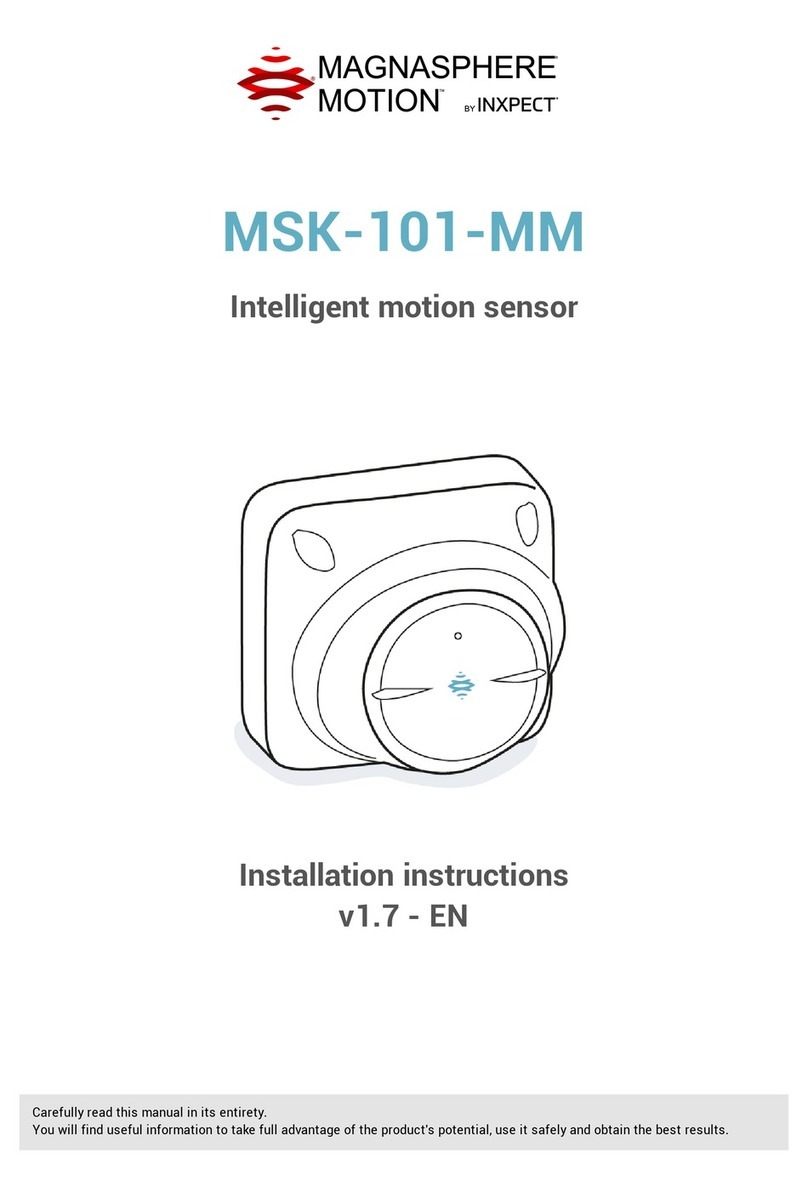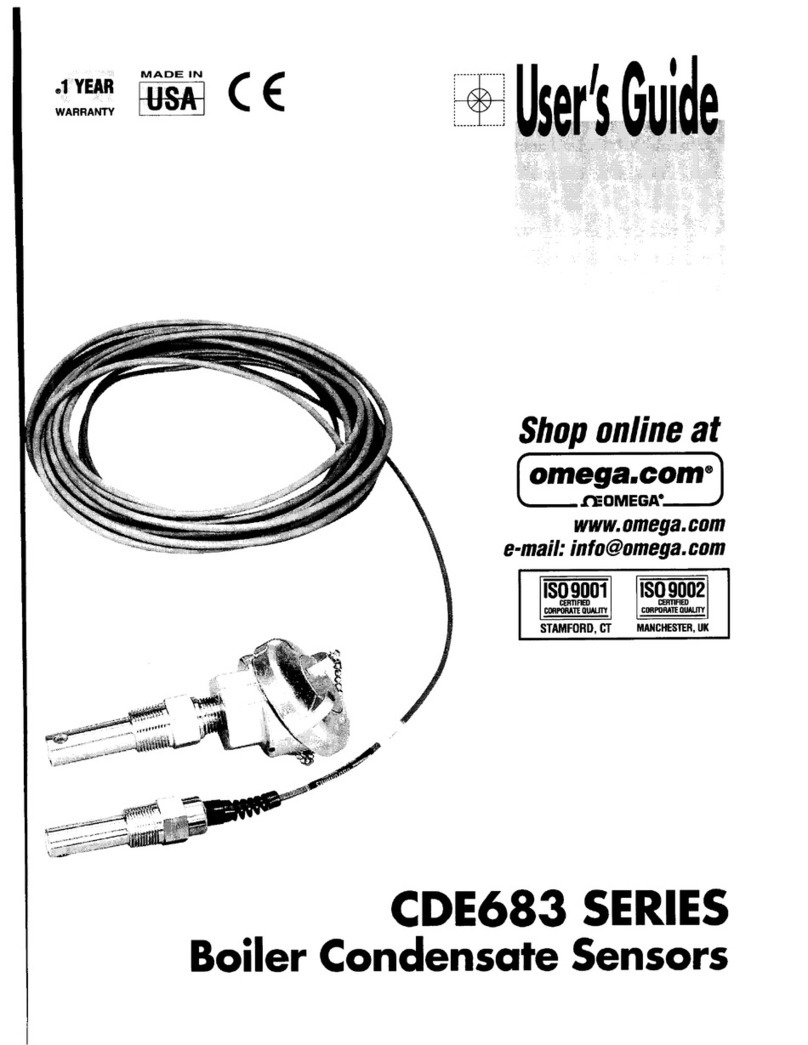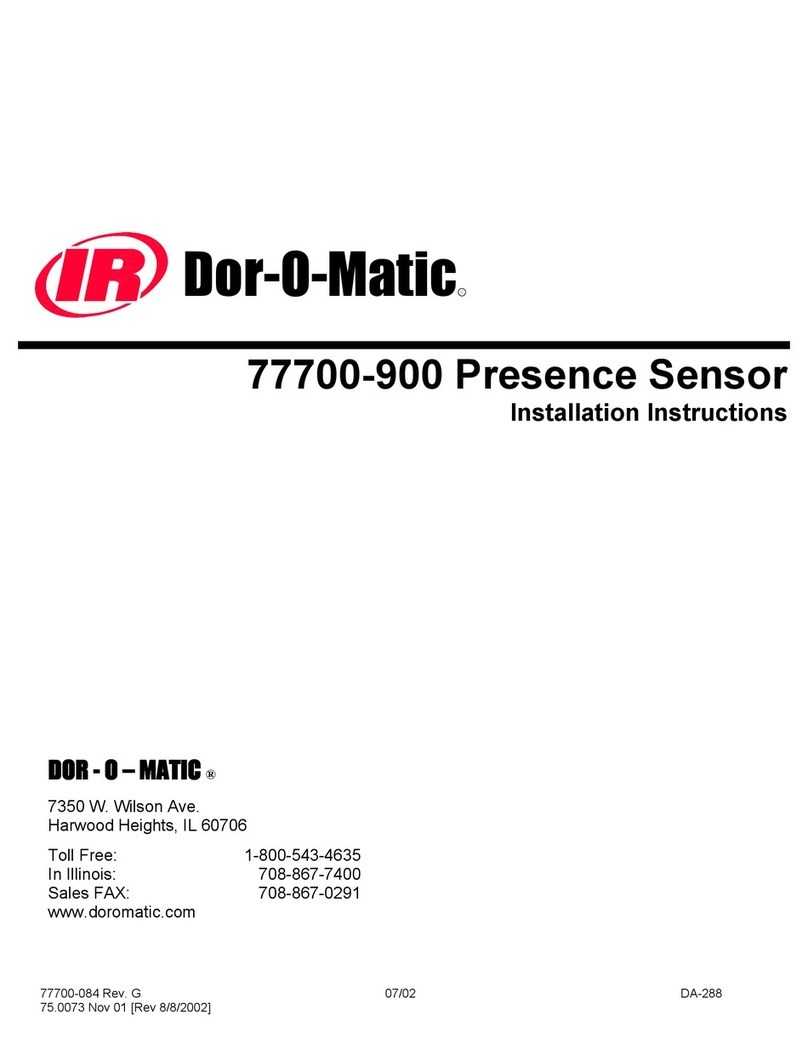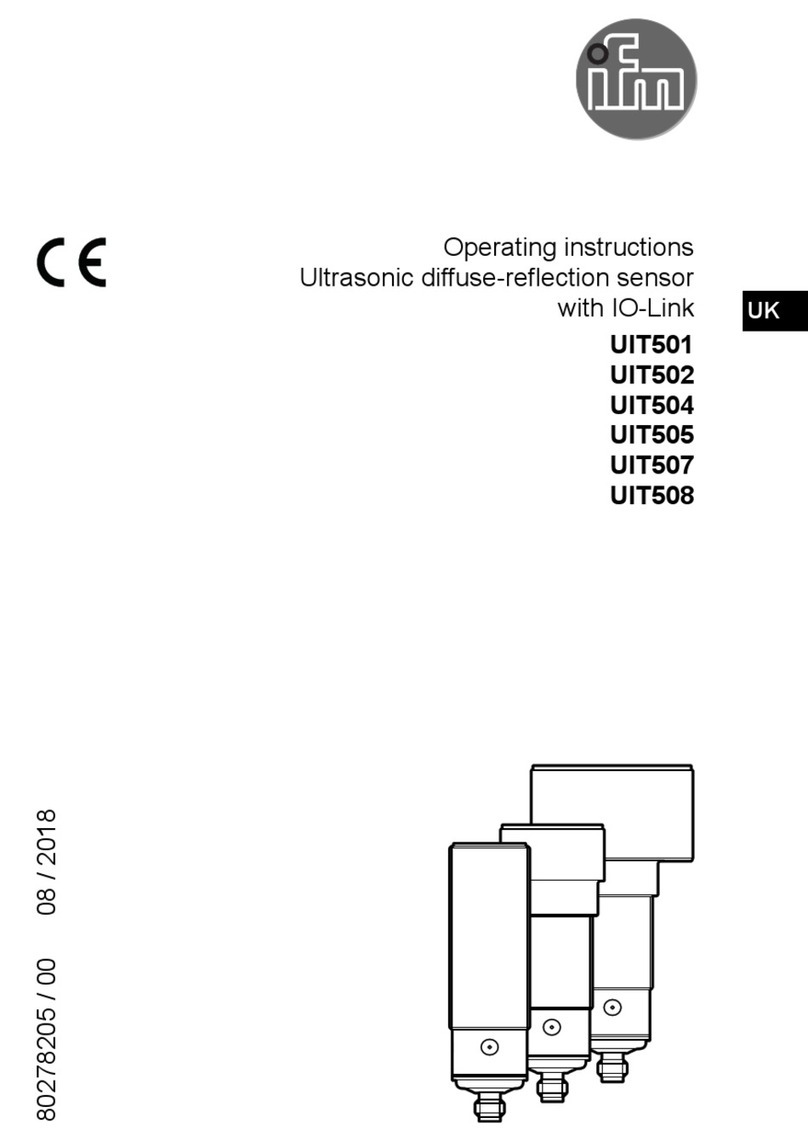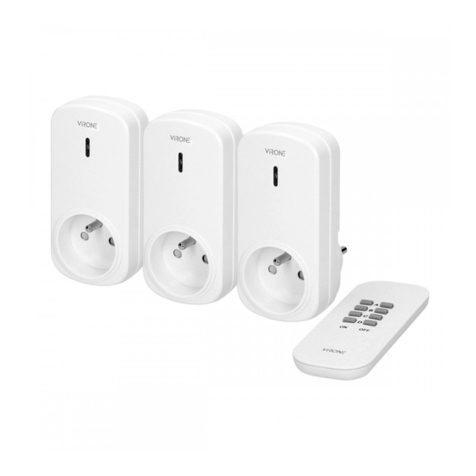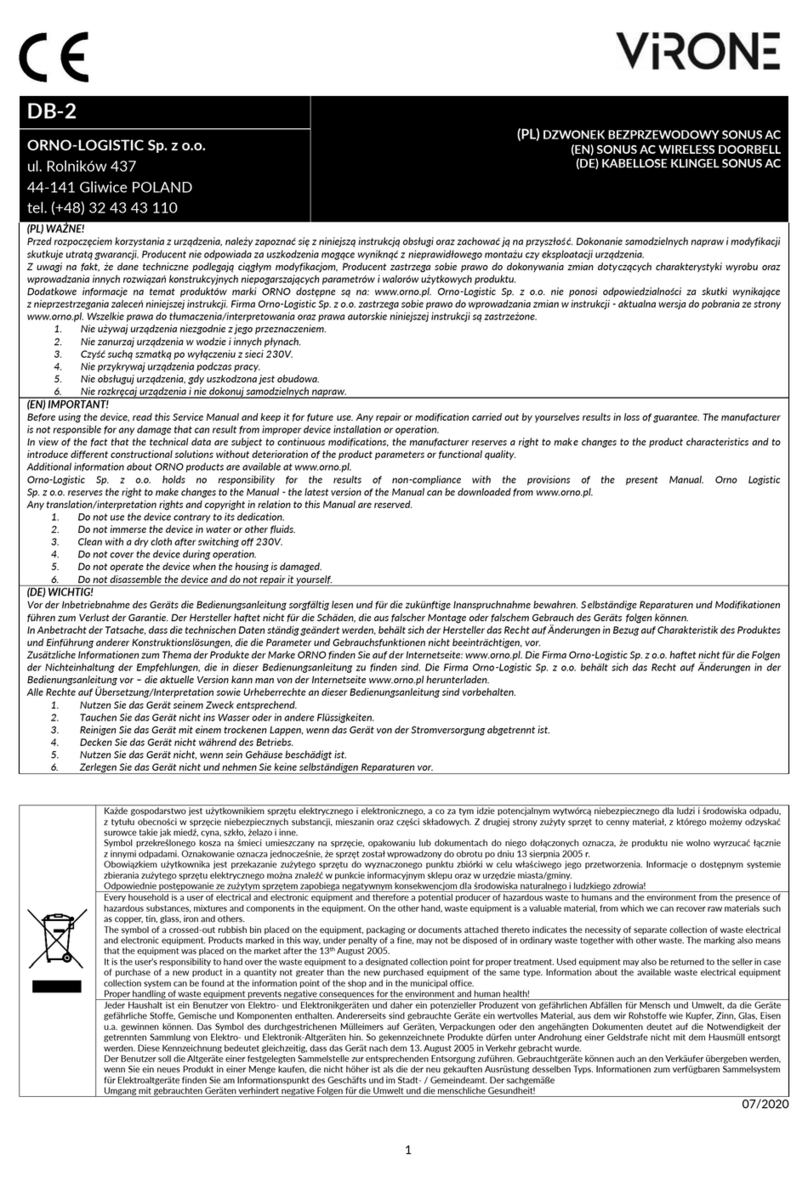
(PL) DZWONEK BEZPRZEWODOWY PRESSO AC
(EN) PRESSO AC WIRELESS DOORBELL
(DE) KABELLOSE KLINGEL PRESSO AC
ORNO-LOGISTIC Sp. z o.o.
ul. Rolników 437
44-141 Gliwice
tel. (+48) 32 43 43 110
(PL) WAŻNE!
Przed rozpoczęciem korzystania z urządzenia, należy zapoznać się z niniejszą instrukcją obsługi oraz zachować ją na przyszłość. Dokonanie samodzielnych napraw i modyfikacji
skutkuje utratą gwarancji. Producent nie odpowiada za uszkodzenia mogące wyniknąć z nieprawidłowego montażu czy eksploatacji urządzenia.
Z uwagi na fakt, że dane techniczne podlegają ciągłym modyfikacjom, Producent zastrzega sobie prawo do dokonywania zmian dotyczących charakterystyki wyrobu oraz
wprowadzania innych rozwiązań konstrukcyjnych niepogarszających parametrów i walorów użytkowych produktu.
Dodatkowe informacje na temat produktów marki ORNO dostępne są na: www.orno.pl. Orno-Logistic Sp. z o.o. nie ponosi odpowiedzialności za skutki wynikające
z nieprzestrzegania zaleceń niniejszej instrukcji. Firma Orno-Logistic Sp. z o.o. zastrzega sobie prawo do wprowadzania zmian w instrukcji - aktualna wersja do pobrania ze strony
www.orno.pl. Wszelkie prawa do tłumaczenia/interpretowania oraz prawa autorskie niniejszej instrukcji są zastrzeżone.
1. Nie używaj urządzenia niezgodnie z jego przeznaczeniem.
2. Nie zanurzaj urządzenia w wodzie i innych płynach.
3. Czyść suchą szmatką po wyłączeniu z sieci 230V.
4. Nie przykrywaj urządzenia podczas pracy.
5. Nie obsługuj urządzenia, gdy uszkodzona jest obudowa.
6. Nie rozkręcaj urządzenia i nie dokonuj samodzielnych napraw.
(EN) IMPORTANT!
Before using the device, read this Service Manual and keep it for future use. Any repair or modification carried out by yourselves results in loss of guarantee. The manufacturer
is not responsible for any damage that can result from improper device installation or operation.
In view of the fact that the technical data are subject to continuous modifications, the manufacturer reserves a right to make changes to the product characteristics and to
introduce different constructional solutions without deterioration of the product parameters or functional quality.
Additional information about ORNO products are available at www.orno.pl.
Orno-Logistic Sp. z o.o. holds no responsibility for the results of non-compliance with the provisions of the present Manual. Orno Logistic
Sp. z o.o. reserves the right to make changes to the Manual - the latest version of the Manual can be downloaded from www.orno.pl.
Any translation/interpretation rights and copyright in relation to this Manual are reserved.
1. Do not use the device contrary to its dedication.
2. Do not immerse the device in water or other fluids.
3. Clean with a dry cloth after switching off 230V.
4. Do not cover the device during operation.
5. Do not operate the device when the housing is damaged.
6. Do not disassemble the device and do not repair it yourself.
(DE) WICHTIG!
Vor der Inbetriebnahme des Geräts die Bedienungsanleitung sorgfältig lesen und für die zukünftige Inanspruchnahme bewahren. Selbständige Reparaturen und Modifikationen
führen zum Verlust der Garantie. Der Hersteller haftet nicht für die Schäden, die aus falscher Montage oder falschem Gebrauch des Geräts folgen können.
In Anbetracht der Tatsache, dass die technischen Daten ständig geändert werden, behält sich der Hersteller das Recht auf Änderungen in Bezug auf Charakteristik des Produktes
und Einführung anderer Konstruktionslösungen, die die Parameter und Gebrauchsfunktionen nicht beeinträchtigen, vor.
Zusätzliche Informationen zum Thema der Produkte der Marke ORNO finden Sie auf der Internetseite: www.orno.pl. Die Firma Orno-Logistic Sp. z o.o. haftet nicht für die Folgen
der Nichteinhaltung der Empfehlungen, die in dieser Bedienungsanleitung zu finden sind. Die Firma Orno-Logistic Sp. z o.o. behält sich das Recht auf Änderungen in der
Bedienungsanleitung vor –die aktuelle Version kann man von der Internetseite www.orno.pl herunterladen.
Alle Rechte auf Übersetzung/Interpretation sowie Urheberrechte an dieser Bedienungsanleitung sind vorbehalten.
1. Nutzen Sie das Gerät seinem Zweck entsprechend.
2. Tauchen Sie das Gerät nicht ins Wasser oder in andere Flüssigkeiten.
3. Reinigen Sie das Gerät mit einem trockenen Lappen, wenn das Gerät von der Stromversorgung abgetrennt ist.
4. Decken Sie das Gerät nicht während des Betriebs.
5. Nutzen Sie das Gerät nicht, wenn sein Gehäuse beschädigt ist.
6. Zerlegen Sie das Gerät nicht und nehmen Sie keine selbständigen Reparaturen vor.
Każde gospodarstwo jest użytkownikiem sprzętu elektrycznego i elektronicznego, a co za tym idzie potencjalnym wytwórcą niebezpiecznego dla ludzi i środowiska odpadu,
z tytułu obecności w sprzęcie niebezpiecznych substancji, mieszanin oraz części składowych. Z drugiej strony zużyty sprzęt to cenny materiał, z którego możemy odzyskać
surowce takie jak miedź, cyna, szkło, żelazo i inne.
Symbol przekreślonego kosza na śmieci umieszczany na sprzęcie, opakowaniu lub dokumentach do niego dołączonych oznacza, że produktu nie wolno wyrzucać łącznie
z innymi odpadami. Oznakowanie oznacza jednocześnie, że sprzęt został wprowadzony do obrotu po dniu 13 sierpnia 2005 r.
Obowiązkiem użytkownika jest przekazanie zużytego sprzętu do wyznaczonego punktu zbiórki w celu właściwego jego przetworzenia. Informacje o dostępnym systemie
zbierania zużytego sprzętu elektrycznego można znaleźć w punkcie informacyjnym sklepu oraz w urzędzie miasta/gminy.
Odpowiednie postępowanie ze zużytym sprzętem zapobiega negatywnym konsekwencjom dla środowiska naturalnego i ludzkiego zdrowia!
Every household is a user of electrical and electronic equipment and therefore a potential producer of hazardous waste to humans and the environment from the presence of
hazardous substances, mixtures and components in the equipment. On the other hand, waste equipment is a valuable material, from which we can recover raw materials such
as copper, tin, glass, iron and others.
The symbol of a crossed-out rubbish bin placed on the equipment, packaging or documents attached thereto indicates the necessity of separate collection of waste electrical
and electronic equipment. Products marked in this way, under penalty of a fine, may not be disposed of in ordinary waste together with other waste. The marking also means
that the equipment was placed on the market after the 13th August 2005.
It is the user’s responsibility to hand over the waste equipment to a designated collection point for proper treatment. Used equipment may also be returned to the seller in case
of purchase of a new product in a quantity not greater than the new purchased equipment of the same type. Information about the available waste electrical equipment
collection system can be found at the information point of the shop and in the municipal office.
Proper handling of waste equipment prevents negative consequences for the environment and human health!
Jeder Haushalt ist ein Benutzer von Elektro- und Elektronikgeräten und daher ein potenzieller Produzent von gefährlichen Abfällen für Mensch und Umwelt, da die Geräte
gefährliche Stoffe, Gemische und Komponenten enthalten. Andererseits sind gebrauchte Geräte ein wertvolles Material, aus dem wir Rohstoffe wie Kupfer, Zinn, Glas, Eisen
u.a. gewinnen können. Das Symbol des durchgestrichenen Mülleimers auf Geräten, Verpackungen oder den angehängten Dokumenten deutet auf die Notwendigkeit der
getrennten Sammlung von Elektro- und Elektronik-Altgeräten hin. So gekennzeichnete Produkte dürfen unter Androhung einer Geldstrafe nicht mit dem Hausmüll entsorgt
werden. Diese Kennzeichnung bedeutet gleichzeitig, dass das Gerät nach dem 13. August 2005 in Verkehr gebracht wurde.
Der Benutzer soll die Altgeräte einer festgelegten Sammelstelle zur entsprechenden Entsorgung zuführen. Gebrauchtgeräte können auch an den Verkäufer übergeben werden,
wenn Sie ein neues Produkt in einer Menge kaufen, die nicht höher ist als die der neu gekauften Ausrüstung desselben Typs. Informationen zum verfügbaren Sammelsystem
für Elektroaltgeräte finden Sie am Informationspunkt des Geschäfts und im Stadt- / Gemeindeamt. Der sachgemäße
Umgang mit gebrauchten Geräten verhindert negative Folgen für die Umwelt und die menschliche Gesundheit!





